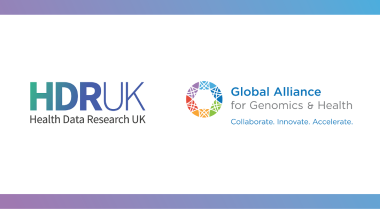Artificial intelligence provides explained predictions to help clinicians tackle antimicrobial resistance
6 January 2023
Explainable artificial intelligence (AI) can be used to predict whether a patient’s bacterial infection warrants the initial use of ‘broad-spectrum’ antibiotics that contribute to antimicrobial resistance, according to new research by University of Warwick, University of Birmingham and Southmead Hospital in Bristol, supported by HDR UK.
The study, published in PLOS Digital Health, shows that that AI was effective at reducing the risk of prescribing the ‘wrong’ antibiotics that bacteria are resistant to.
Antimicrobial resistance – the ability of organisms like bacteria to survive drug treatments that should normally kill or stop growth in them – is a major global health challenge. Bacterial infections are becoming increasingly resistant to the antibiotics regularly prescribed, resulting in prolonged hospital stays and an increased risk of death for patients.
When first admitted to hospital for severe infection, antibiotics are often initiated as soon as possible and within the first hour for cases of sepsis. The choice of which antibiotic(s) are based on medical experience, patient symptoms and population-level hospital guidelines while the clinician waits up to three days for laboratory test results to confirm the right treatment.
AI has great potential to anticipate when an infection might be caused by drug-resistant bacteria and improve the effectiveness of the first – and most important – antibiotic choice. By using patient data, AI can help healthcare professionals reduce starting ‘broad-spectrum’ antibiotic classes to when they are most needed. This is a major step towards providing safe and effective treatment at the individual patient-level (personalised medicine). However, to gain trust from both patients and the medical profession, the AI output needs to be transparent and explainable.
A team of researchers trained an AI model to predict the probability that bacteria present in a patient’s blood or urine sample may be resistant to an antibiotic treatment. This model was tested using data from 5190 hospital admissions of patients with bacterial infections, together with information on the antibiotics administered during prior admissions and their effectiveness.
The model was shown to accurately predict which antibiotics a bacterial infection would not respond to, resulting in fewer mismatches (treatments used but found to be ineffective) compared to the decisions made on admission without the benefit of AI.
Crucially, the tool also provided an explanation of how the AI model came to its prediction – possible due to recent advances in the field of interpretable machine learning.
Dr Massimo Cavallaro, lead author on the study, said: “AI is often depicted as a black-box: it takes in data and returns a prediction, such as whether a patient is at risk of antimicrobial resistance or not, without any insights on the prediction process. Historically this gave doctors virtually no clue to what extent they should rely on AI predictions when making antimicrobial drug recommendations.”
“In our work we report the level of certainty and uncertainty for each AI prediction, which we feel is key to establishing trust. Here we also use explainable AI to show the characteristics of hospital patients commonly associated with antimicrobial resistance.”
“We believe these technologies can help physicians evaluate AI clinical decision support systems and reduce the use of ineffective antibiotic drugs, and help to preserve effective antibiotics for when we need to use them.“



